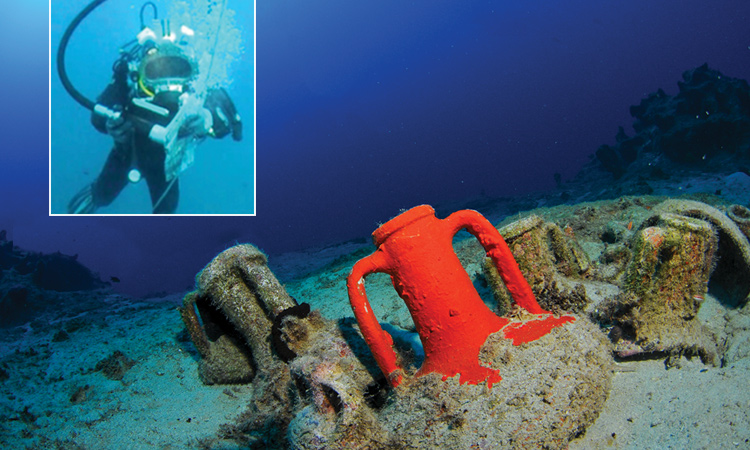Feature
LIBS Continues to Evolve
Now decades old, laser-induced breakdown spectroscopy is still finding applications in novel areas, driven by technology, miniaturization and creative extension of the technique to new problems.
 A Spanish-Italian team used an underwater LIBS setup from Applied Photonics (Skipton, U.K.) to analyze archaeological objects in the Mediterranean Sea at a depth of 30 meters. [Getty Images; inset courtesy of J.J. Laserna, from S. Guirado et al., Spectrochim Acta B 74–75, 137 (2012)]
A Spanish-Italian team used an underwater LIBS setup from Applied Photonics (Skipton, U.K.) to analyze archaeological objects in the Mediterranean Sea at a depth of 30 meters. [Getty Images; inset courtesy of J.J. Laserna, from S. Guirado et al., Spectrochim Acta B 74–75, 137 (2012)]
Laser-induced breakdown spectroscopy (LIBS)—a form of atomic emission spectroscopy, in which the spectra are read from a tiny patch of ablated sample material, suspended in a laser-induced plasma—has been around for a long time. The first observation of a laser-induced plasma with potentially useful spectral information was reported in 1962, only two years after the laser’s initial demonstration. Nineteen years later, Tom Loree and Leon Radziemski introduced the modern form of the technique, and gave it its name, in a landmark 1981 paper in the journal Plasma Chemistry and Plasma Processing.
…Log in or become a member to view the full text of this article.
This article may be available for purchase via the search at Optica Publishing Group.
Optica Members get the full text of Optics & Photonics News, plus a variety of other member benefits.

